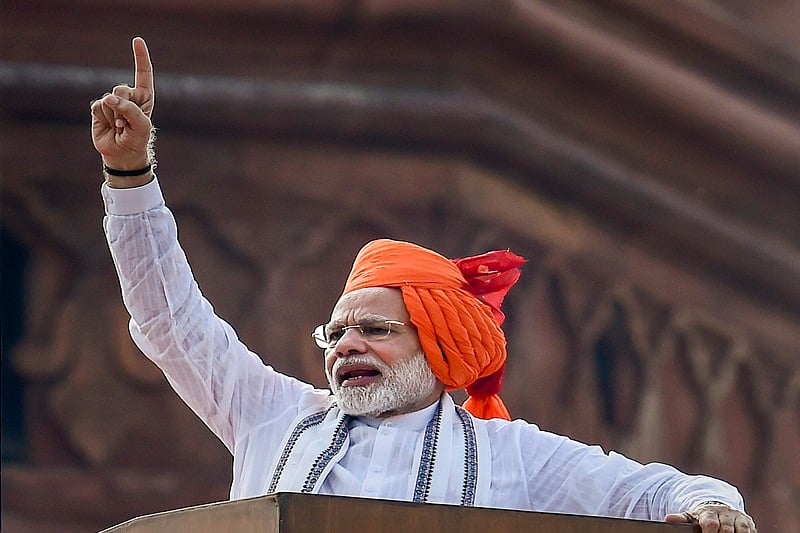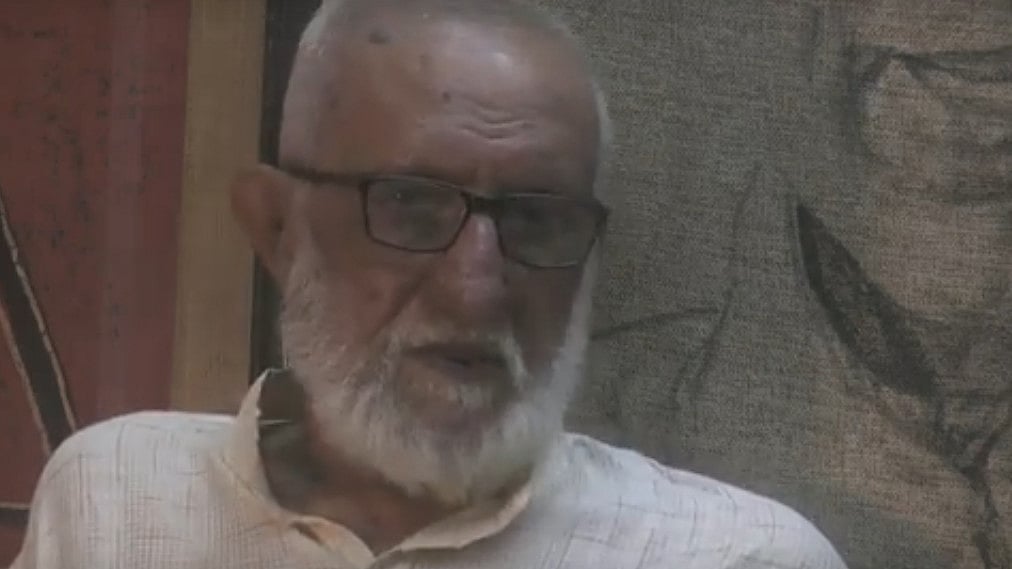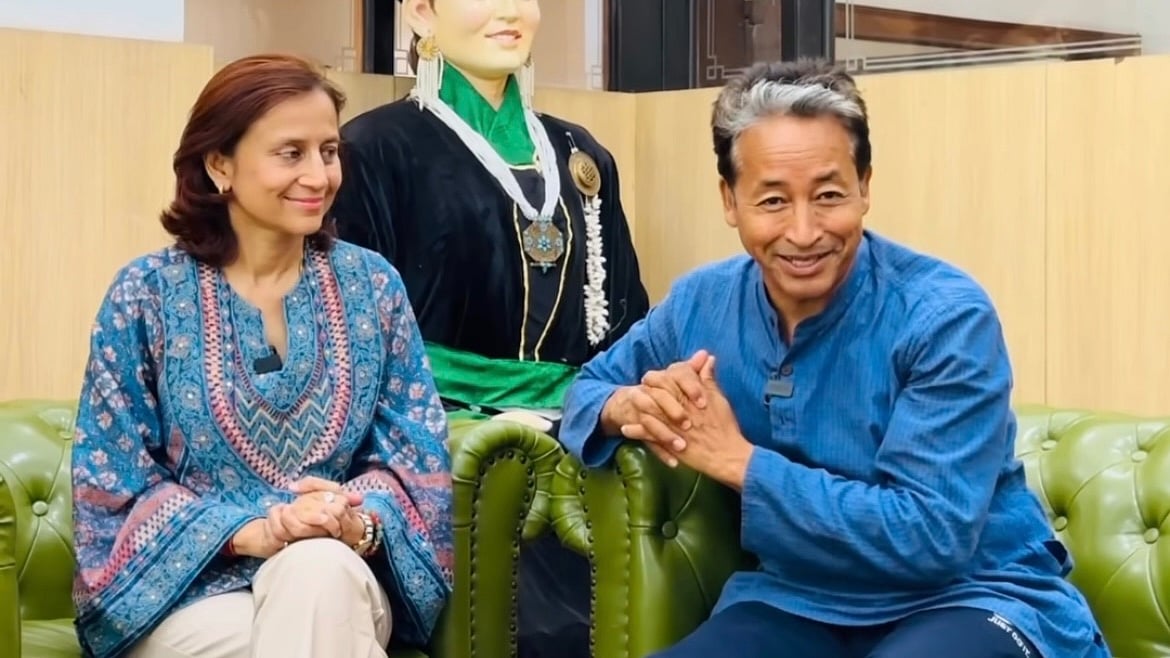Prime Minister Narendra Modi’s persuasive India-rising speech at Red Fort carried an electoral message, with a subtext of continuity-with-change. The country’s rapid growth trajectory, he hinted, must not be compromised by political upheaval. A masterful balance of fact and dream-mongering, it was aimed at ramping up the feelgood factor induced by a satisfactory monsoon.
Through a series of potent word pictures, he presented an India on the cusp of transformative change. By taking hard decisions, his government had scripted an economic turnaround. Even as India emerged as a key player on the world stage, her villages were experiencing unprecedented access to basic services like power, fuel, roads, health and education. And so on. As the PM laid out the agenda for 2019, detractors drew parallels with 2004, when the ‘India Shining’ script flopped at the box office and the Congress romped home with its ‘Aam Aadmi’ slogan. Will PM Modi’s India-rising narrative meet a similar fate?
The grand old party’s hopes of a 2004 redux must contend with harsh ground realities. For one thing, the aam aadmi catchphrase came back to bite the Congress. For another, the one state which enabled it to form a government in 2004 no longer exists. But for the 29 seats contributed by YSR Rajshekhar Reddy in 2004 (and the 33 seats he brought to the table in 2009), the Congress might have been relegated to the Opposition.
For the BJP, the pessimism that followed the downturn in Gujarat, the loss of bye-elections, the failure to form a government in Karnataka and an increasing index-of-Opposition-unity, appears to have been replaced by a steel-edged determination to bounce back. By contrast, the Opposition seems to be losing traction. The efforts towards a pre-electoral mahagathbandhan took a beating in the election of the Rajya Sabha deputy chairman.
Fielding Harivansh Narayan Singh of the JD(U) as the NDA nominee was a masterstroke by the BJP, which garnered the support of non-NDA opposition parties like the TRS, BJD and AIADMK. The NDA itself presented a solid front, with the Shiv Sena and Akali Dal falling in line. Significantly, the Aam Aadmi Party and YSR Congress abstained.
The forward momentum of alliance-building efforts have been checked by hard bargaining over seat-sharing. While the Congress high command is pushing for the proposed SP-BSP-Congress-RLD front in Uttar Pradesh, the state unit is noticeably less enthusiastic, realising that a grand coalition would limit it to a handful of seats. Besides, it is not yet clear how the factionalism in the SP will play out on the ground. Talks towards a three-state BSP-Congress alliance are a simpler proposition, but Mayawati is famously tempremental.
An AAP–Congress alliance in Delhi may seem like the most natural thing in the world, given the Centre’s shameless clobbering of the Kejriwal government, but there is a conflict of interest because both parties share the same vote base. The AAP might be amenable to all-India alliance with the Congress, lending the grand old party a shoulder in Delhi while using its support in Punjab, Haryana and Goa. An exchange of strengths, as it were. For the Congress, however, the danger of a regional player gaining ground at its expense may be too great a gamble.
In Karnataka, the JD(S)-Congress alliance is under strain. Further east, Andhra CM Chandrababu Naidu has shown a willingness to ally with the Congress in Telengana but not in his own state. In Assam, it is the Congress that seems unwilling to tie up with the AIUDF. In Odisha, it is drawing comfort from the BJD’s alignment with the NDA in the Rajya Sabha deputy chairman’s election, on the premise that it as a bigger force in the state than the BJP. The picture is complex, further confused by parallel efforts towards a Federal Front.
Reports from Madhya Pradesh and Rajasthan are no longer as favourable as they were just a couple of months ago. The open factionalism in the Rajasthan Congress is a sliver of hope for the embattled BJP government, whose popularity has eroded steadily from the day it took office. In MP, Shivraj Singh Chouhan is regaining lost ground, aided in no small measure by the disarray in the Congress.
Countering the PM’s development, good governance and anti-corruption mantras will require humungous effort. Already, the NDA is attempting to rectify errors of the last four years – simplifying GST, increasing MSP for farmers, launching the Ayushman Bharat plan and attempting to win over taxpayers by appealing to national pride, philanthropy and promises of better services. Consciously harping on inclusiveness, avoiding any hint of majoritarianism and stressing gender parity, he seeks to blunt the Opposition’s intolerance campaign. The next six months will decide whether Modi can recapture the mood of 2014, or whether the Congress can script another 2004.
Bhavdeep Kang is a senior journalist with 35 years of experience in working with major newspapers and magazines. She is now an independent writer and author.










